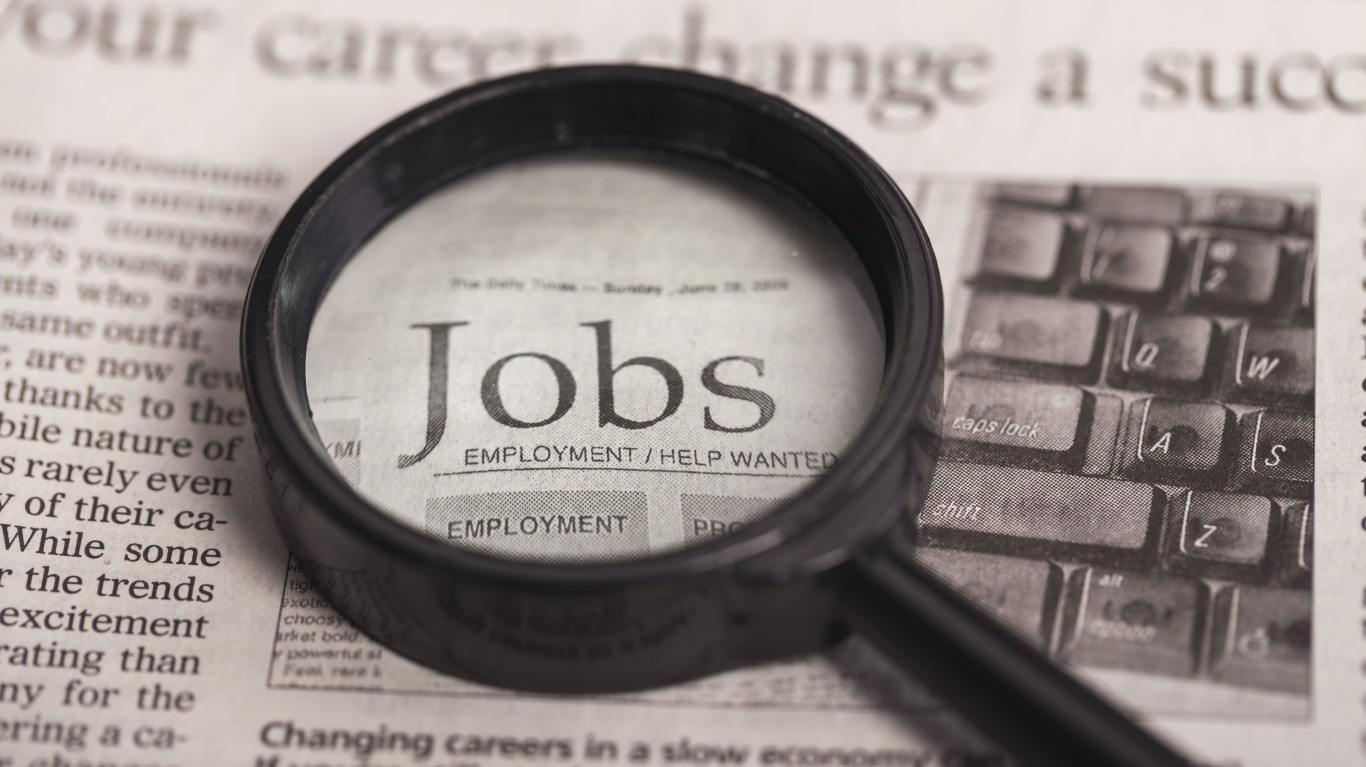
JPMorgan researchers forecast that GDP could drop by 40% in the second quarter. The jobless rate nationwide could rise to 20%. That means some states, with workforces in the hardest-hit industries, could post unemployment figures of 25%. That would be worse than the 24.9% nationwide jobless figure in 1933 at the trough of The Great Depression.
247 Wall St. has examined the states with the worst jobless claims numbers since mid-March. This shows the particularly difficult vulnerability of the employment markets in each of them. They are much worse than the national trend and could continue to be over the next several months.
In its “Every State’s Unemployment Claims Since COVID-19 Shut the Economy Down”, 24/7 editors wrote,
Mid-March marked a turning point in the coronavirus outbreak in the United States. President Donald Trump officially declared a national emergency on March 13, 2020. Two days later, the Centers for Disease Control and Prevention advised Americans to avoid gatherings of 50 people. Over the next three weeks, restrictions tightened, the numbers of infections and deaths from the disease soared, and more than 15 million Americans lost their jobs.
Among the worst:
In Hawaii, unemployment claims since mid-March were 110,495 or 16.6% of the labor force.
In Kentucky, unemployment claims since mid-March hit 279,307 or 13.6% of the labor force.
In Louisiana, unemployment claims since mid-March were 272,823 or 13.1% of the labor force.
In Michigan unemployment claims since mid-March hit 817,185 or 16.6% of the labor force.
In Nevada, unemployment claims since mid-March were 244,105 or 15.9% of the labor force.
In Pennsylvania, unemployment claims since mid-March were 1,065,846 or 16.5% of the labor force.
In Rhode Island, unemployment claims since mid-March hit 91,902 or 16.6% of the labor force.
In contrast, the state hit least hard in South Dakota, unemployment claims since mid-March reached only 16,478, a low 3.6% of the labor force.
During The Great Recession and recovery that followed there was strong evidence of vastly different employment from state to state. In October 2009, the national unemployment rate was 10.2%. In some states, it was over 50% higher than that. When the jobless rate dropped to 3.5% recently, in some states it was just above 2%.
All states are not created equal, particularly when measured by employment compared to the rest of the country.
Find a Qualified Financial Advisor (Sponsor)
Finding a qualified financial advisor doesn’t have to be hard. SmartAsset’s free tool matches you with up to 3 fiduciary financial advisors in your area in 5 minutes. Each advisor has been vetted by SmartAsset and is held to a fiduciary standard to act in your best interests. If you’re ready to be matched with local advisors that can help you achieve your financial goals, get started now.
Thank you for reading! Have some feedback for us?
Contact the 24/7 Wall St. editorial team.


